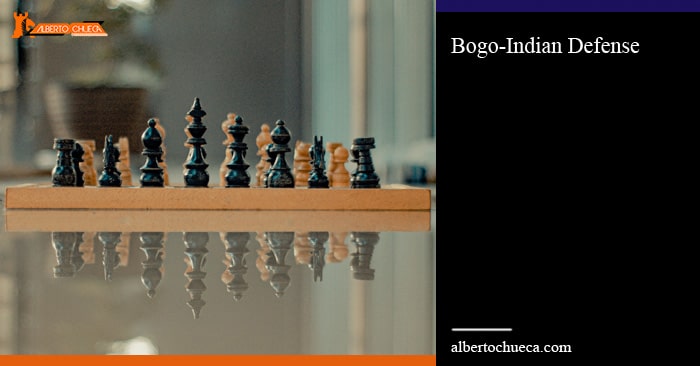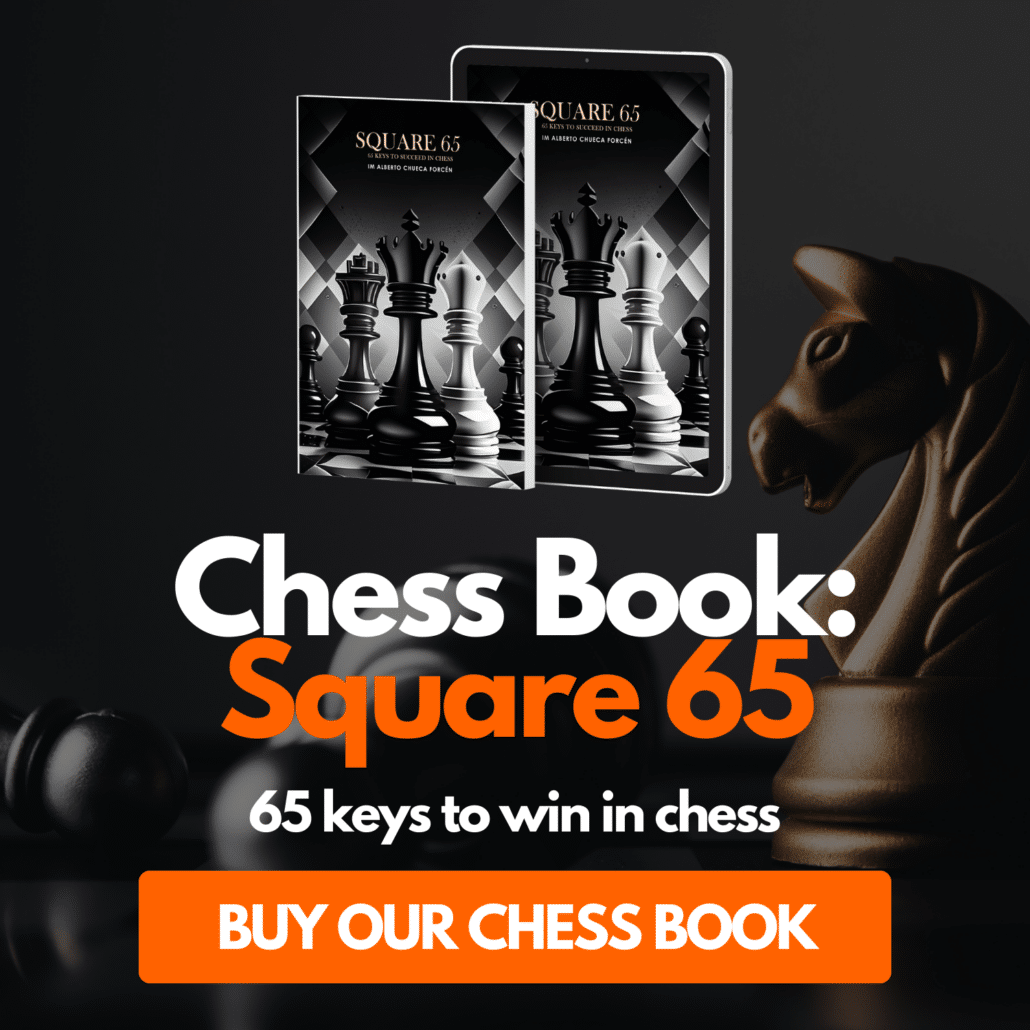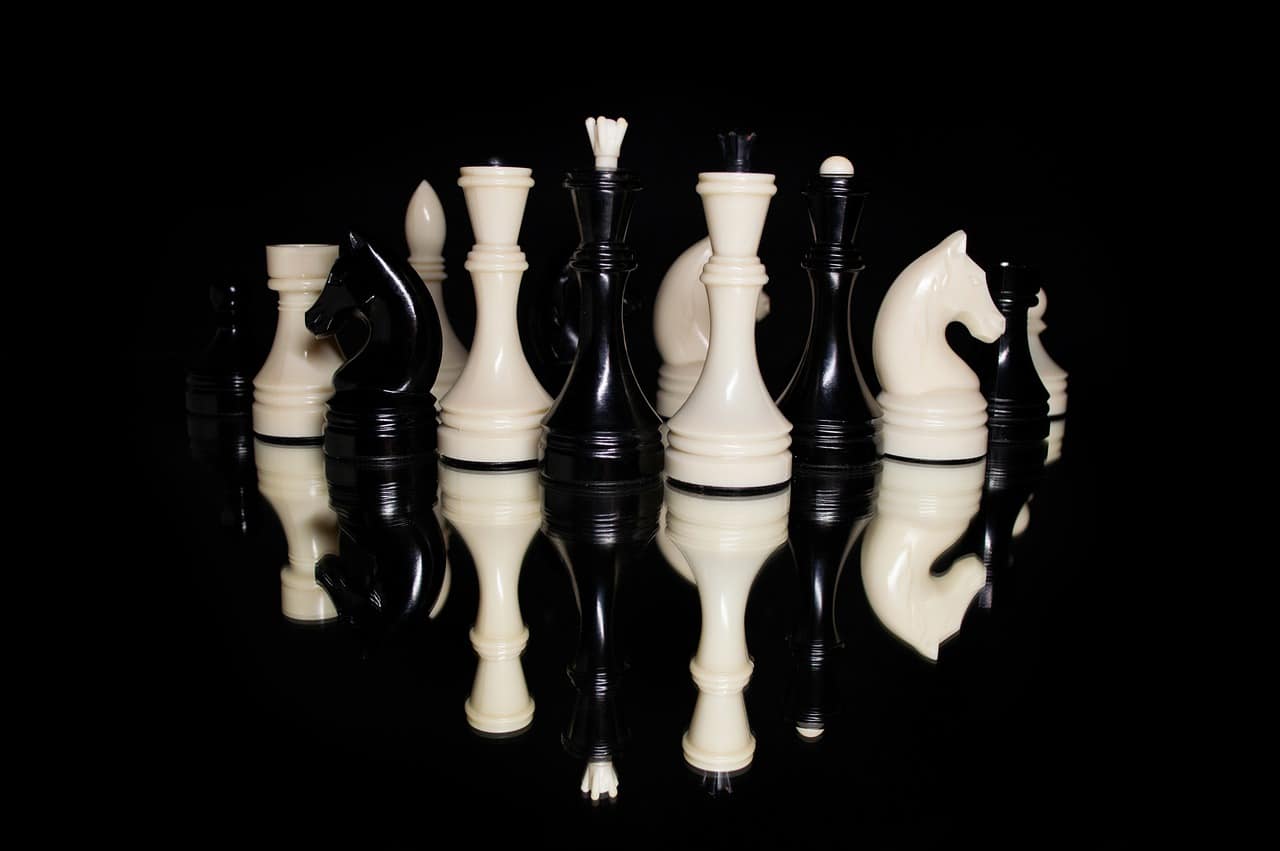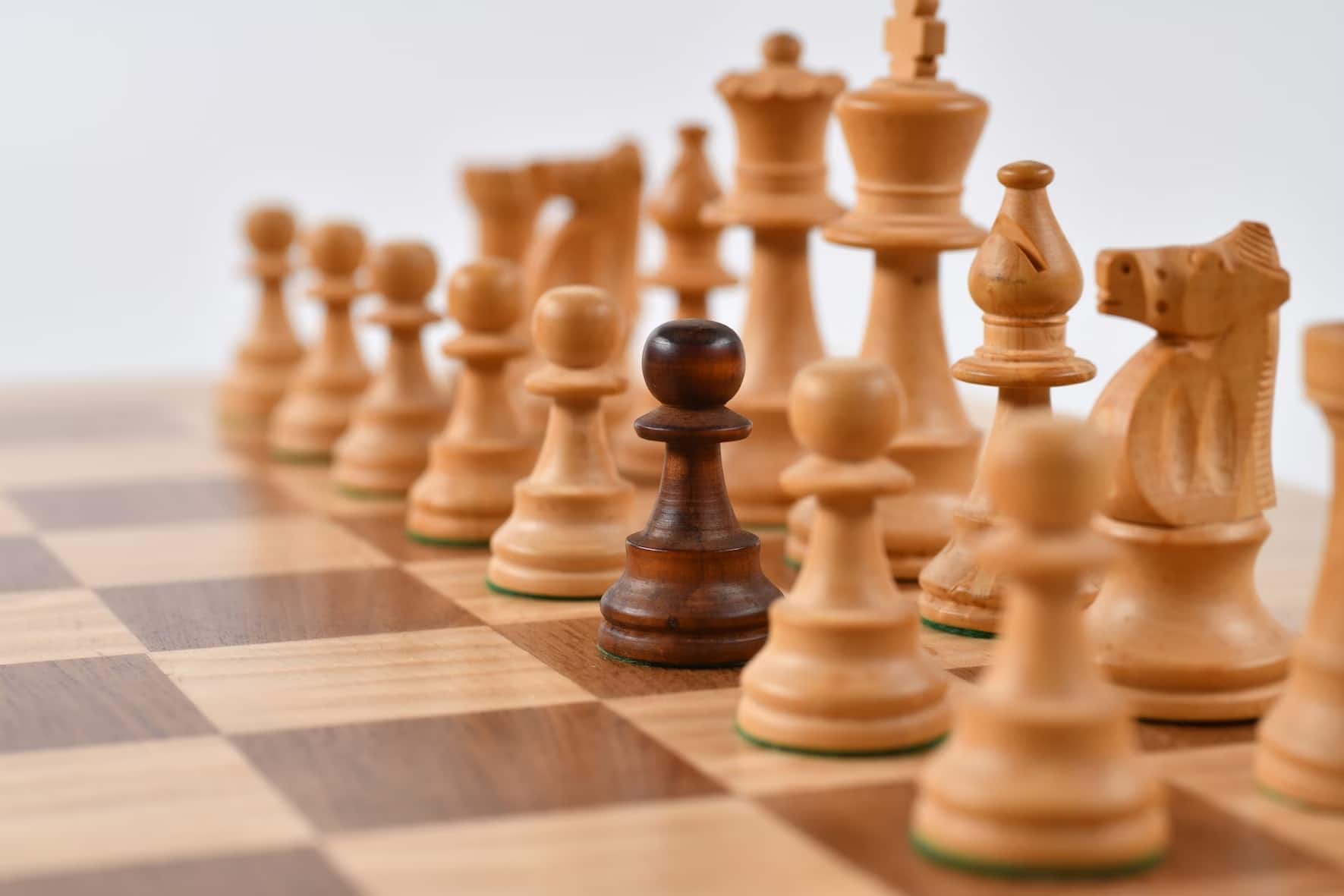Table of Contents
Bogo-Indian Defense
Bogo-Indian Defense is an interesting variation Black can play against Queen’s Pawn. It is named after the strong master Efim Bogoljubov. Since the beginning, the second player develops the pieces on the Kingside very quickly, and very often they can misplace some white minor piece on the Queenside.
We have Bogo-Indian Defense on the board after the moves
- d4 Nf6 2. c4 e6 3. Nf3 Bb4+
This is the main position in the theory of Bogo-Indian Defense. When White plays 3.Nf3, they intend to avoid Nimzo-Indian Defense, since after 3.Nc3 Black can play 3 … Bb4, wanting to capture on c3 to create some damage in White’s pawn structure, and in general, the second player is getting good positions, very often with a balanced and comfortable middlegame.
So after 3.Nf3, Black can get into an extremely popular variation, very strong, we call Queen’s Indian Defense, by playing 3 … b6. Also, there is 3 … d5, getting into a Queen’s Gambit.
The line we study today (Bogo-Indian Defense) is a good alternative to those lines. It is a little less popular, however, it has some very interesting ideas and subtleties, and if White does not know the position very well they could have some problems in the middlegame.
Some theory and ideas in Bogo-Indian Defense
After the check on b4, White basically has three options:
a) 4. Nc3 Kasparov Variation of Nimzo-Indian Defense
This move is creating the same problematic situation White wanted to avoid when they played 3.Nf3. The position belongs to the theory of Nimzo-Indian Defense. Here Black has some options, for example, they can play 4 … d5 transposing again to another line, this time it is Ragozin Variation.
Also, 4 … b6, 0-0, or c5 are very well, and we stay in the territory of Nimzo-Indian Defense. The idea is to continue developing, to put the light squares Bishop on the Great Diagonal and undermine White’s center with typical moves like c5 or d5. The square e4 could also be great for the black Knight from f6.
b) 4. Nbd2
The idea of this move is to avoid an unfavorable trade on c3, where White’s pawn structure could be damaged. Besides, in the next moves, Black either will have to give the Bishop for the Knight or waste a tempo and go back with the Bishop. The game could continue:
4 … b6 5.a3 Bxd2 6.Bxd2 (also the capture with the Queen is playable for White)
6 … Bb7 and White is very slightly better
Black has a very good Bishop on the Great Diagonal, a Knight controlling the important square e4, and good pressure on the white center as compensation for losing the Two Bishops.
c) 4. Bd2
This is the mainline for White against Bogo-Indian Defense. Here Black has several interesting options:
c1) 4 … Bxd2 This is not played very often; it has been said it is a drawing line. In this variation there is a famous trick we want to highlight, it is named Monticelli Trap and continues:
5.Qxd2 b6 6.g3 Bb7 7.Bg2 0-0 8.Nc3 Ne4 9.Qc2 Nc3
10.Ng5!?
Now White is threatening mate on h7 and also taking on b7, which also involves the capture of the Rook on a8. In general, White will get the exchange up, but it seems like Black can get very good compensation for the material down. So, even when it is interesting, the first player does not get any real advantage in this Monticelli Trap.
c2) 4 … Qe7 Nimzowitsch Variation
c3) 4 … c5 5.Bxb4 cxb4 and the Knight will not be developed over c3.
c4) 4 … Be7 which is a little passive but still solid for Black
However, my favorite option will be
c5) 4 … a5 This seems to be a more or less sharp line in Bogo-Indian Defense. It was played by the strong master David Bronstein.
If White trades, the “a” file will be half-open, and also the pawn on b4 could be very annoying for them since now they cannot develop the Knight over the natural square c3. So usually they should avoid this exchange, and the theory suggests:
5.g3 b6 6.Bg2 Bb7 7.0-0 0-0 and the position is between Equal and Slightly Better for White.
This time Black keeps the Two Bishops, and again the square e4 will be very interesting for the minor pieces.
Typical Plans for Black in Bogo-Indian Defense
In these positions, as a general idea, we can say Black will try to exploit and control the square e4 with the Knight or sometimes also with the light squares Bishop. Besides, Black always wants to put pressure on White’s center, so moves like c5, or e5 attacking d4 and maybe forcing some inappropriate advance of this pawn are very common.
Typical squares for black pieces in Bogo-Indian Defense
King: Black always castles Kingside
Queen: Usually it does not move early in the game. Then in the middlegame, it could go to some more active square, like e7 (also to connect the Rooks)
Rooks: Normally “c” and “d” are fine. It also depends on what happens after the central breaks and which file is finally open or half-open after some eventual exchange. Also, there is this idea of f5 and later the Rook lifts to the Kingside over f6, which could be strong if Black intends some attack on the Kingside.
Bishops: The dark squares Bishop goes to b4 in move 3, then very often it is traded for a minor piece. Even when Black has to exchange this piece for the White Knight, it makes sense, since this piece is a very good defender of e4, a square Black wants to exploit in Bogo-Indian Defense.
The light squares Bishop, in general, goes to b7, where it controls e4 and the Great Diagonal. Sometimes, this Bishop could go to e4 (instead of black Knight) and put some good pressure on White’s position.
Knights: The Kingside Knight will be controlling and probably going to e4 during the middlegame. The Queenside Knight is usually developed over d7 after the typical d6 (or maybe some d5).








